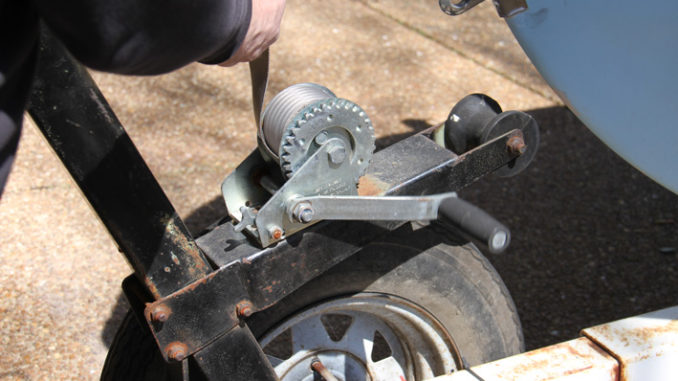Understanding how to correctly attach a strap to a winch is crucial for anyone involved in towing, recovery, or off-road adventures.
This simple yet vital process ensures safety and efficiency during winching operations.
Let’s dive into the importance of this skill and a brief overview of what the process entails.
Preparing the Winch
Ensuring the Winch is in Good Working Condition
Inspect your winch for any signs of wear or damage before use. A well-maintained winch is essential for safe and efficient winching operations.
Properly Positioning the Winch for the Task
Position the winch so that it can pull the load in a straight line. This reduces the risk of the cable or strap becoming twisted or overloaded.
Checking the Winch Cable or Rope
Inspect the winch’s cable or rope for frays, kinks, or any damage. A compromised cable can fail under stress, posing a significant safety risk.
Step-by-Step Guide to Attaching the Strap

Now that you’ve selected the appropriate winch strap and prepared your winch, it’s time to attach the strap securely. Follow these steps:
Threading the Strap Through the Winch Hook
This first step is all about precision and ensuring your strap is set up correctly for the task ahead. Here’s how to do it properly:
- Locate the End of the Strap: Identify the end of your winching strap. This is typically the end with a loop or a reinforced eyelet, designed for secure attachment.
- Open the Winch Hook: Depending on your winch model, you may need to press down on a safety catch or pull a release pin to open the hook.
- Thread the Strap: Carefully feed the looped or eyeleted end of the strap through the opening in the hook. Pay close attention to ensure that the strap does not twist or fold as it passes through. A flat, straight strap is crucial for an even distribution of force during winching operations.
- Secure the Hook’s Closure: Once the strap is in place, close the winch hook’s safety catch or replace the release pin, securing the strap in position.
Creating a Secure Connection
After threading the strap through the winch hook, the next step is to ensure that this connection is as secure as possible:
- Choose the Right Connector: Depending on your setup, you might use a shackle or another type of hook to secure the strap to the anchor point or load. A shackle is often recommended for its robustness and the secure lock it provides.
- Attach the Connector: If using a shackle, thread it through the loop or eyelet at the end of the strap and then through the attachment point on the load or anchor. Screw the pin into the shackle until it’s hand-tight, and then give it a small turn with a tool to ensure it’s fully secured. If using a hook, ensure it engages securely with the attachment point.
- Check for Security: Give the connector a gentle tug to ensure it’s properly secured. A secure connection will not show any signs of slippage or movement.
Double-checking the Attachment
The final step before beginning winching operations is a comprehensive double-check of all connections:
- Inspect the Strap’s Path: Ensure the strap is correctly aligned and not twisted or caught on any sharp edges that could cause wear or damage during use.
- Verify the Security of the Hook and Connector: Double-check that the winch hook is fully closed and that the shackle or hook connecting the strap to the load is tightly secured.
- Look for Potential Hazards: Ensure there are no knots or damages in the strap that could weaken it during use. Also, check the surrounding area for any objects or obstacles that could interfere with the winching operation.
Tips for Efficient Winching
To maximize the efficiency of your winching operations, consider the following tips:
- Use proper winching techniques, such as maintaining a straight line pull whenever possible. This helps to minimize stress on the winch and strap, reducing the risk of damage or failure.
- If you need to change the direction of the pull or increase your mechanical advantage, consider using a snatch block. This pulley-like device can be attached to the strap, allowing you to redirect the pull or double the winch’s pulling capacity.
- When spooling the strap back onto the winch, maintain a tight and even wrap to prevent tangling and ensure smooth operation during future winching tasks.
Also check: How to Securely Attach a Hook to a Winch Strap
Conclusion
Attaching a strap to your winch correctly is a crucial skill for anyone involved in winching operations.
By following the steps outlined in this guide and prioritizing safety, you can ensure that your winching tasks are completed efficiently and without incident.
Always choose the appropriate strap for the job, maintain your equipment properly, and stay alert to potential hazards.
With these guidelines in mind, you’ll be well-equipped to tackle any winching challenge that comes your way.

